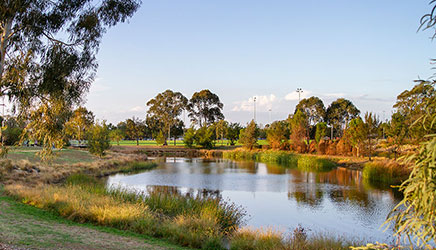Why is a good idea so hard to do? Integrating urban water
19 March 2020

Our major cities are facing considerable water challenges in the future. Significant population growth will increase demand for services whilst climate change is likely to reduce water availability in most areas.
To meet these combined challenges, we will be spending billions of dollars on water assets over the next twenty years.
But the way we do it can make a major difference to the liveability of our cities, which is intrinsically linked to economic growth.
Liveability is substantially dependent on providing high quality, green open spaces. These spaces are crucial for recreation and play a vital role in mitigating urban heat. They also provide habitat for wildlife and play a significant role in improving the community’s physical and mental health.
How our water services are planned and provided play a huge role in the type of and quality of our open spaces, particularly in new growth and major infill areas.
Our current approach to urban water management won’t deliver. It is often fragmented with stormwater managed separately to water supply and wastewater. Too often water services aren’t properly considered when planning land use and building new suburbs.
But we can do things differently - stormwater can be managed in ways that create wetlands and urban habitat and integrate natural waterways into the design of cities. We could provide water in the landscape, connect green corridors and r reduce pollution. Wastewater and stormwater can provide fit-for-purpose water to irrigate parks, recreation spaces and trees for urban cooling all year round. However, in most cities today, this water is not being used to help make our cities liveable.
But to achieve this, we need an integrated approach to the way we supply water and manage stormwater and wastewater. This approach would see us bring together water authorities, land use planners, and local governments at each scale of planning - at the city-wide scale, the precinct and the local scale. They need to be able to work within a policy framework that allows them to use the most effective options available to meet our community needs, including contributing to urban amenity.
In our report on Integrated Urban Water Management, we have identified ten key impediments to adopting a more integrated and effective approach. These span government policy, service planning and delivery, regulation and funding with the most significant of these in policy.
Governments have not always provided the authorising policy environment which would mean that contributing to urban amenity, by providing water to create green spaces, is considered as a legitimate outcome of urban water management - alongside the traditional outcomes of providing of safe, reliable water supplies, removing wastewater and managing stormwater to reduce flooding.
There are few mechanisms for land and water planners to interact. Some states have policy bans eg on indirect potable use, which means these options can’t be considered regardless of their benefits.
The level of investment required over the next 20 years provides a window of opportunity for us to rethink and adopt an integrated approach and ensure that our communities get the best value possible.
Water assets are expensive with long operating lives - it’s important to get these decisions right. Decisions taken now cannot be reversed and will set up the nature of these new suburbs for ever.
Related publications

